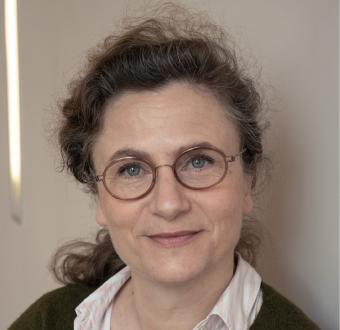

Catherine TALLON-BAUDRY
Researcher
Research Director
Cognitive Studies
Cognitive neuroscience
ENS-PSL
Department of Cognitive Studies
Published on
22 September 2021
, updated on
10 January 2022
Image

Laboratoire de neurosciences cognitives et computationnelles
1er étage, bureau C104
29, rue d'Ulm 75230 Paris cedex 05
01 44 322793
Initially trained as a biologist, my current research aims at elucidating the biological mechanisms underlying the emergence of consciousness in humans.
Field of research
I devoted the first part of my carrer to the functional role of oscillatory synchrony, studied mostly using electrophysiology in humans (EEG, MEG intracranial EEG) but also in monkeys (anesthetized or behaving, ECoG). I revealed the existence of gamma band osicllations in humans, and broadened the range of cognitive functions (e.g., attention, memory) in which oscillatory synchrony might play a role, beyond the feature binding hypothesis that was dominant at the time (TICS 1999). This line of research led me to show that counter-intuitively, attention and consciousness have distinct oscillatory correlates, and hence correspond to distinct neural entities, affecting behavior in different ways. My work on the links between attention and consciousness (J Neurosci 2008; Curr Biol 2013) led me to revise the notion that consciousness is “super” cognitive function that was most prominent in the field at the time.
Rather, I shifted the focus on a notion central to consciousness, subjective experience, which requires a subject of experience.
I propose and test the hypothesis that the subjective dimension of consciousness could make use of the neural monitoring of visceral inputs, that would constitute a simple implementation of a basic form of self. Under this hypothesis, interoception interacts with conscious perception and cognition. I am currently developing and modeling the hypothesis that visceral inputs, which are found in all sensory areas, establish a common reference point to coordinate the different coordinate systems in which sensory information is encoded, hence contributing to establish the unified point of view that characterizes first person perspective. Experimentally, my group showed that how the brain responds to heartbeats predicts whether a faint visual stimulus is consciously perceived (Nat Neurosci 2014), is a marker of the self ((J Neurosci 2016; Phil Trans Biol 2016), and allows to decode the consciousness state of non-communicating patients emerging from coma (J Neurosci 2021). My group also explores the consequences of brain-viscera coupling to understand large-scale brain dynamics. We have developed the non-invasive recording and analysis of the slow (0.05Hz) electrical rhythm produced in the stomach (Psychophysiol 2020) and shown that resting-state brain activity measured in MEG or fMRI is coupled to the gastric rhythm (NIMG 2017; eLife 2018). We also showed that spontaneous fluctuations of neural firing rate (SUA/MUA, epileptic patients) in the entorhinal cortex modulate the cardiac rhythm (J Neurosci 2019).
Publications
- Tallon-Baudry C, Bertrand O (1999) Oscillatory gamma activity in humans and its role in object representation. Trends in Cognitive Sciences, 3:151-162
- Wyart V. and Tallon-Baudry C. (2008) A neural dissociation between visual awareness and spatial attention. Journal of Neuroscience, 28: 2667-2679
- Sergent C., Wyart V., Babo-Rebelo M., Naccache L., Cohen L., Tallon-Baudry C. (2013) Cueing attention after the stimulus is gone can retrospectively trigger conscious perception. Current Biology 23, 150-155.
- Park, H.D., Correia, S., Ducorps, A., Tallon-Baudry, C. (2014). Spontaneous fluctuations in neural responses to heartbeats predict visual detection. Nature Neuroscience. 17, 612-618.
- Babo-Rebelo, M., Richter, C., Tallon-Baudry, C. (2016) Neural responses to heartbeats in the default network encode the self in spontaneous thoughts Journal of Neuroscience, 36:7829-7840.
- Wolpert N, Rebollo I, Tallon-Baudry C (2020) Electrogastrography for psychophysiological research: Pratical considerations, analysis pipeline, and normative data in a large sample. Psychophysiology 57:e13599. doi: 10.1111/psyp.13599
- Rebollo I., Devauchelle A.-D., Béranger B., Tallon-Baudry C. (2018) Stomach-brain synchrony reveals a novel, delayed-connectivity resting-state network in humans. eLife, 7, e33321. doi: 10.7554/eLife.333212018
- Kim K, Ladenbauer J, Babo-Rebelo M, Buot A, Lehongre K, Adam C, Hasboun D, Lambrecq V, Navarro V, Ostojic S, Tallon-Baudry C. (2019) Resting-state neural firing rate is linked to cardiac cycle duration in the human cingulate and parahippocampal cortices. Journal of Neuroscience, 39:3676-3686
- Azzalini D, Rebollo I, Tallon-Baudry C. (2019) Visceral signals shape brain dynamics and cognition Trends in Cognitive Science, 23 (6), 488-509.
- Candia-Rivera D, Anne J, Gosseries O, Martial C, Thibaut A, Laureys S, Tallon-Baudry C (2021) Neural responses to heartbeats detect residual signs of consciousness during resting state in comatose patients. Journal of Neuroscience, 41(24) 5251:5262. DOI

